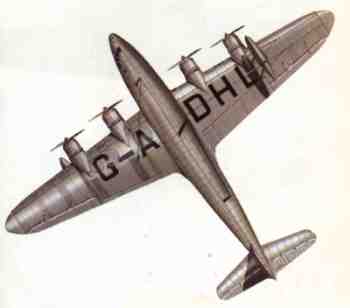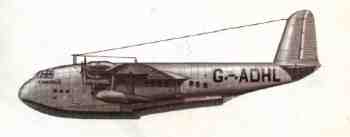

It was clear by the 1930's that the age of air travel had arrived.
The two main centres of activity were Europe and the United States; of which the United States had by far the greater quantity of internal traffic. This was due partly to geographic reasons and partly to the decisive influence of political and linguistic unity which had allowed a vast system of well equpped air routes to be set up, bound by the same flying rules and regulations and on which flying under radio control was becorning more and more widespread.
On the other hand, the old countries of Western Europe still had great empires. One of the many problems of empire were communications, and with a letter from Britain to Australia taking up to 30 days for delivery by fast ocean liner, it was inevitable that the first international airlines would appear in Europe.
The British company, Imperial Airways, had indeed grand designs: to transport by air all the first class mail of the empire (letters and cards), without surcharge, the only restriction being that the maximum weight of a letter, stamped at the normal rate of one and a half pennies, would be reduced from one ounce to half an ounce.
This would mean that each week Imperial Airways aircraft would leave England with more than 20 tons of mail. This freight alone, which was distributed from Egypt between the African, Asian and Australian routes, was going to need a completely new type of long distance service and new large capacity aircraft.
For this service the
company ordered 28 new Shorts Empire C class flying
boats. It was a brave and enterprising plan since the
cost of the aircraft alone was about 1¾ million pounds
in addition to route setup costs and new
infrastructure.
 |
 The Shorts flying boats, weighing some 20 tons when fuelled, were delivered on time and within budget. Each boat was powered by four 910hp Bristol Pegasus engines and could accommodate up to 17 passengers and 4000lbs of freight and mail. The first, Canopus, flew in July 1936. They had a cruising speed of 160 mph on an average stage of 750 miles carrying 3 tons of freight. Later C class boats were powered by Bristol Perseus engines giving double the range with the same payload. |
By early August 1938 there were eight weekly services from England to Egypt, with five going on to Calcutta and Sydney, which was reached in less than 10 days. Three services reached Kisuma on Lake Victoria and on to Durban in 4½ days. These routes became the central point of an air traffic network, then unequalled in the world, but which it was planned to extend even further until all parts of the empire were united.
One interesting facet of the C type was the single type constructed for the Short Mayo composite experiments. This single aircraft, christened Maia, had a greater planing bottom, larger wing and tail surface areas to accommodate the Mercury, a twin float, four engined aircraft which was mounted on a frame above the Maia.The Maia lifted the fully laden Mercury to operational altitude where they would separate, allowing the smaller craft to continue to its destination. Flights from Ireland to Montreal and Scotland to South Africa followed, the latter being a world distance record for seaplanes at over 6000 miles.

With the emphasis on Trans Atlantic flying, three G class boats were designed for this service, Golden Hind, Golden Fleece and Golden Horn. In June 1938 Golden Hind was launched, a 33 ton flying boat powered by 1380hp Bristol Hercules engines and a combined cruising range of 3200 miles in unprecendented comfort and luxury.
| Construction had been delayed by a
shift in priorities to build military
Sunderlands, developed from the C class, for the
Royal Air Force, however Imperial Airways hoped
to have all three G class in service by the end
of 1939. Before the G class entered service, Britain was at war, and after five long years and a vastly changed world, the fundemental changes in aviation development made it practically impossible for this graceful form of air transport to flourish. |
 Short S.33 G class flying
boat, |
23 Oct 98